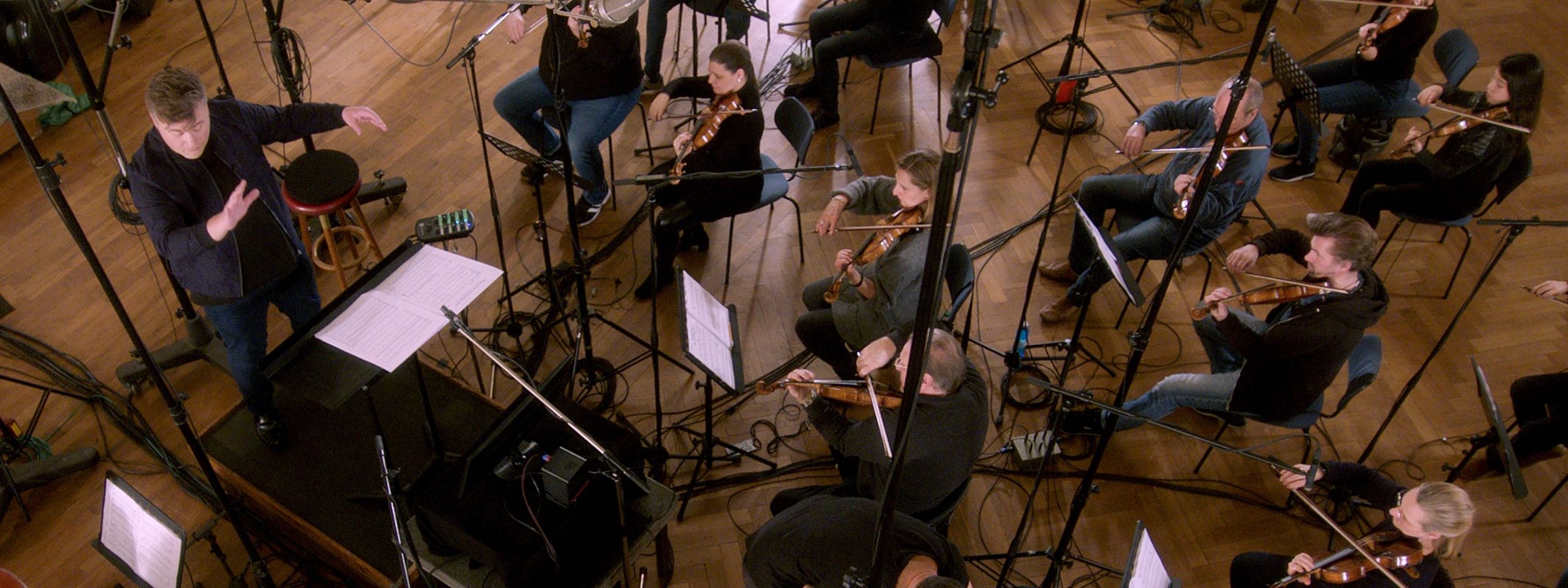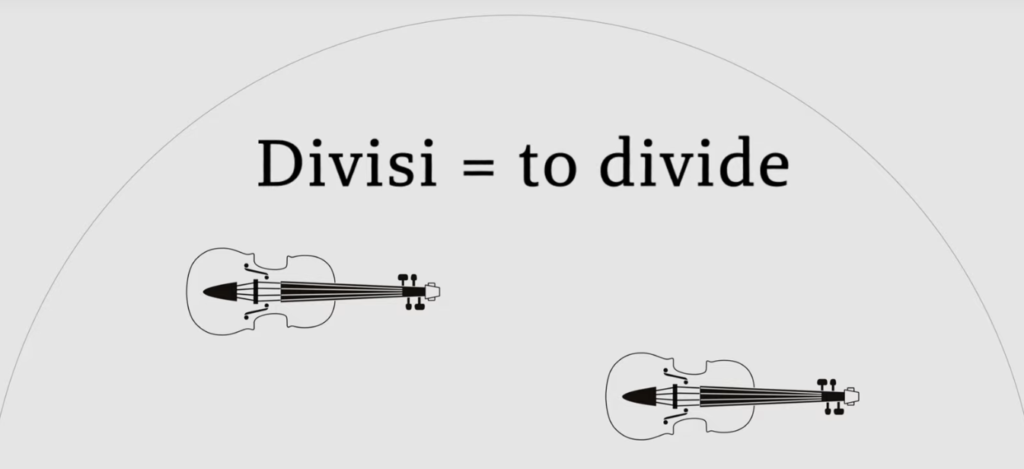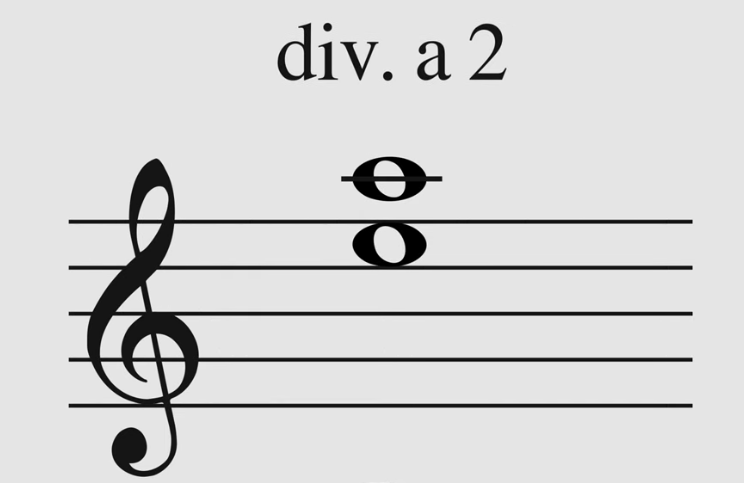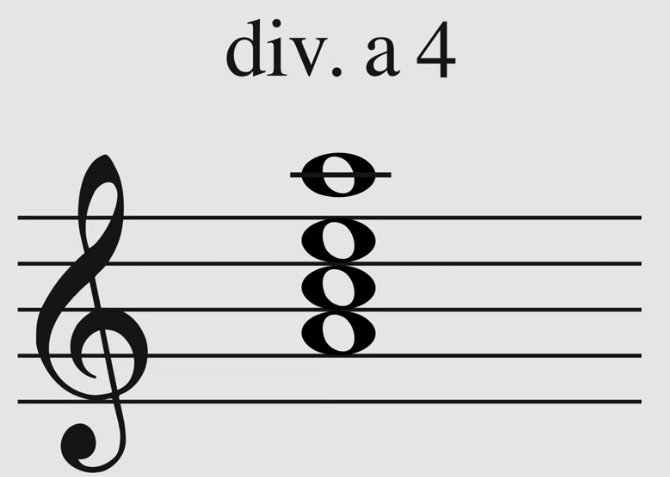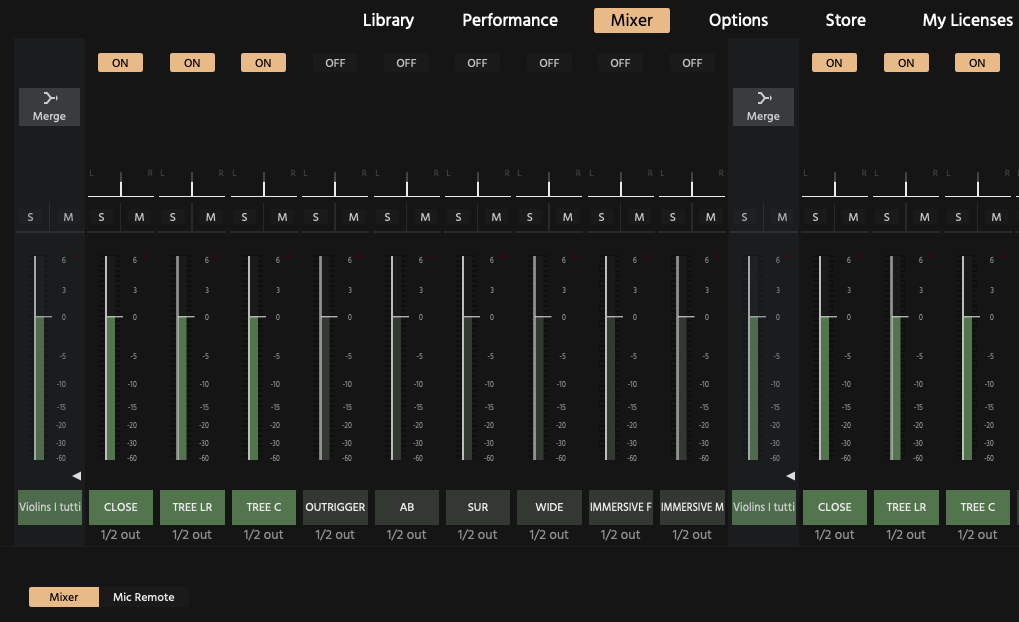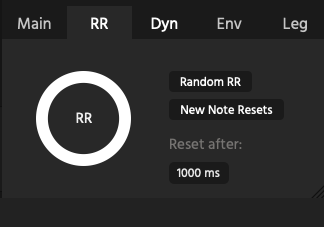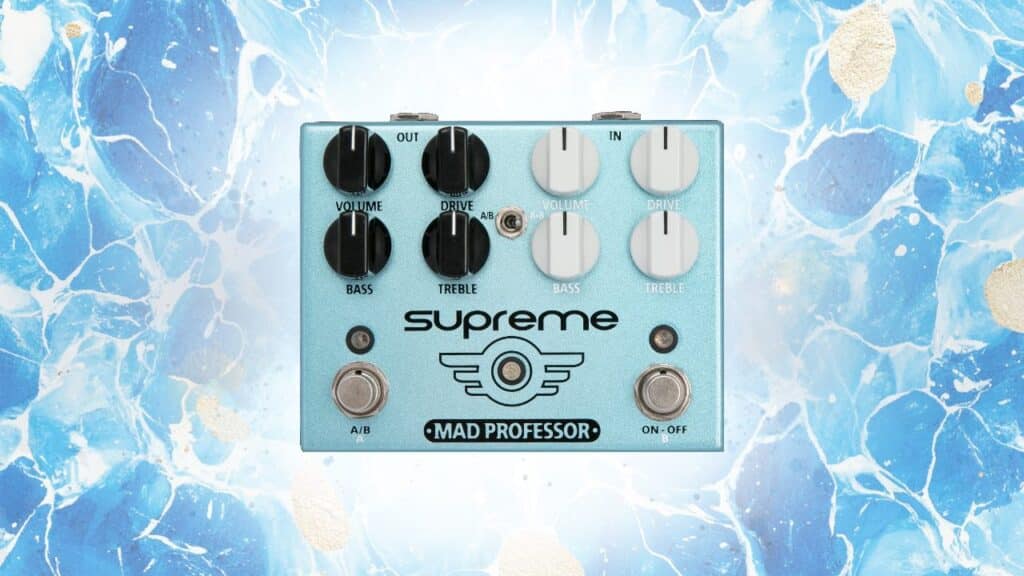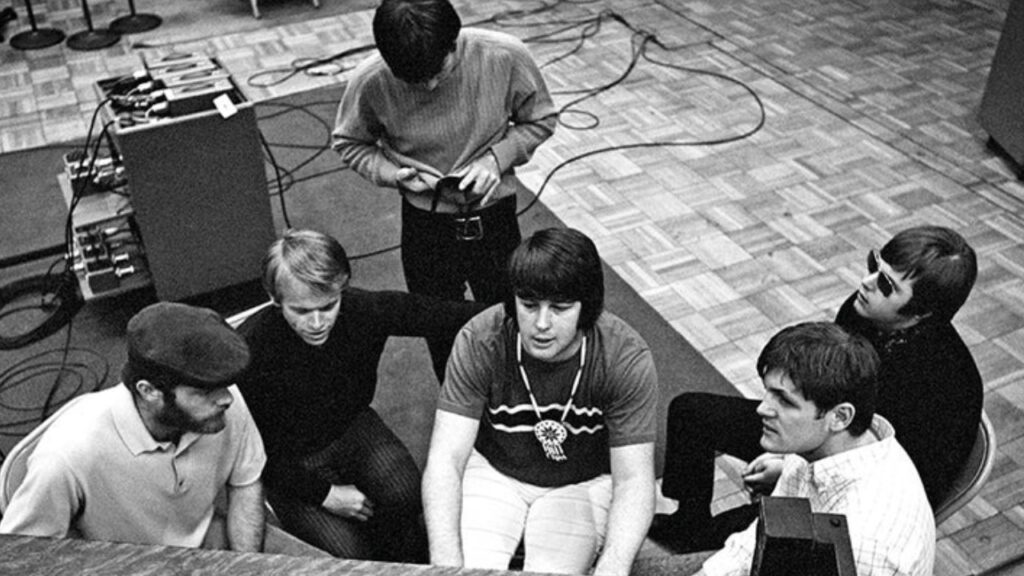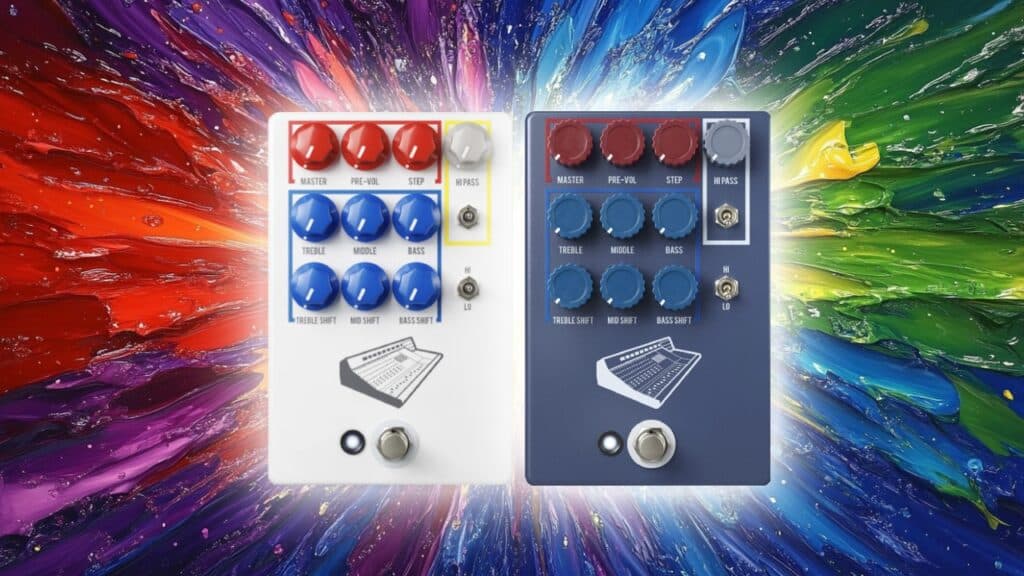In collaboration with composer, Benjamin Wallfisch, Orchestral Tools has two released two new string libraries: Benjamin Wallfisch Strings and Stringscapes. The composer is known for scoring such films as Blade Runner 2049, Shazam!, It, It Chapter Two, The Invisible Man, Hidden Figures, A Cure for Wellness, The Flash, and recently, Mortal Kombat.
As with other OT offerings, both libraries are accessed through their free SINE player as a stand-alone or plugin. Let’s have a look.
BENJAMIN WALLFISCH STRINGS
This is a full-blown string orchestra with a level of control rarely seen in string libraries in terms of divisi possibilities and bowing technique. It is geared toward cinematic writing and it will appeal to acoustic music composers used to writing for real players. It is not that common for string libraries to be organized for divisi in the same way things are done with acoustic music. For those not familiar with divisi writing read on.
WHAT IS DIVISI?
When divisi (meaning divided) is written on a string part it often indicates that players sharing a stand or desk should each play only one note of a two-note part. Top and bottom notes might also vary in rhythm with different stemming. Splitting parts by desk is a common approach. So for a Violin 1 section with 14 players and 7 stands, 1 player on each stand would play the top note and the others would play the bottom note. While it could be possible for every player to play both notes as double stops, that would be a very different sound, more aggressive and louder, if it were even practical.
You can also divide sections by front and back. One reason this might be preferable is for doubling the basses with half of the cello section, which is usually positioned directly in front of the bass section. This would create a more cohesive low end while leaving the front of the cello section free to play in higher registers. Likewise, you may want to reserve the front of the violin section for more melodic parts while the back could be used to fill in the harmonic texture.
With divisi you can get thicker more complex harmonies while maintaining a degree of expressivity not otherwise possible. In the Wallfisch library, each divisi section was recorded independently instead of simply layering existing recordings. This improves the level of realism and authenticity, and it really makes a great deal of difference.
The term unis. (unison) can follow a divisi indication when the composer wants all players to play the same part. It could be used when a two-note div. passage is followed by a single line indicating that players should play double-stops or chords depending on the context.
Although the term, Tutti is sometimes used for the same reason, it traditionally indicates the return of the ensemble after a solo section.
THE PATCHES
- Violin 1 – 14 – tutti
- Violin 1 – a7
- Violin 1 – a7
- Violin 2 – 12 – tutti
- Violin 2 – a6
- Violin 2 – a6
- Viola – 10 – tutti
- Viola – a5
- Viola – a5
- Cello – 10 – tutti
- Cello – a5
- Cello – a5
- Basses – 6 – tutti
- Basses – a3
- Basses – a3
This library allows you to write with all the freedom and control of a traditional acoustic composer using divisi writing and beyond that, you can create behemoth-sized ensembles by using the divisi parts along with the tutti patches. Check the video below from OT for a great overview and other possibilities.
The control of up and down bowing using key switches is another great feature often overlooked by other libraries. There are no loops used for long notes, again lending to an unprecedented degree of realism.
Basic articulations include:
- Legato
- Marcato
- Staccato
- Spiccato
- Pizzicato
- Tremolo
- Trills
For a deeper look at string articulations have a look at this article I wrote on the subject a few years ago: “String Articulations: Terminology and Effects”
Mic positions and techniques include:
The array of Mic positions is robust and the Mixer in SINE player makes it easy to blend mic types and techniques. Included are:
- Close
- Tree LR
- Tree C
- Outrigger
- AB
- Surround
- Wide
- Immersive F
- Immersive M
You’ll find other standard controls for Round Robins, Dynamics, Legato settings, and Envelope under the hood:
This library is a stunning offering from OT that will surely become a favorite for orchestral string composers. It sounds lush and rich and puts the sounds of beautiful realistic strings on the fingertips of the user.
However, if your main intention is to create textural string effects as opposed to rich harmonic and melodic writing, you might want to consider Stringscapes instead.
STRINGSCAPES
As the name implies, this library is designed to create sonic textures and atmospheric effects by way of extended playing techniques. In creating this collection, Wallfisch explains he wasn’t after sounds meant only for the horror genre, but also meditative and beautiful otherworldly sounds. While many categories do include the dark side such as dystopia and horror, there are also, drones, textures, transcendental, percussive, and experimental sounds that can be used in many contexts.
THE PATCHES
Strings sections are organized by register–high and low or tutti. There is a Sound Design section that is fun to explore. I went for the Experimental category right out of the box to see just how far Wallfisch was willing to take it. I‘m happy to report he went really far! Some of my favorites are:
The Swarm setting is a lovely Shepard tone effect that seems to rise in pitch infinitely, never arriving at a destination. It is an acoustic illusion named after cognitive scientist, Roger Shepard. The effect was famously used by Hans Zimmer for the score of Dunkirk, and David Julyan for the score of The Prestige, among others.
Mechanical Whispers is another favorite that involves chaotic percussive tinkling and plucks with dissonant ring outs.
All Hallows is another rising effect that starts slow and stays low–increasing in intensity. It takes time to evolve but it worth the wait.
The Ringing patch offers eerie harmonics that build and layer themselves–transforming the sound from disconcerting to peaceful with flawless transitions.
At the funfair introduces electronic-like sounds that may be the result of aggressive time stretching of acoustic material.
Lift to Hell is another Shepard tone effect but a little cleaner and more precise in terms of texture.
Other subcategories under Sound Design include Textures which is replete with gorgeous sonorities that build and evolve while remaining consistent in energy and emotion. Here is a patch called Vertigo:
There are also Drones and Percussive effects to round out the category.
The Low, High, and Tutti String FX categories are more traditional effects and use the same microphone strategies seen in the full string library. But don’t be fooled when I say more traditional. When you’ve heard the Bartok cluster patch you’ll know what I mean.
Some great stuff here that draws upon the aleatoric and textural foundations laid down by composers, like Iannis Xenakis, Witold Lutoslawski, György Ligeti, and Krzysztof Penderecki among others. Accent Pads is a good one:
The Tutti Transcendental category has a bit more optimistic palette. Listen to the Chords patch:
CONCLUSIONS
These are both great libraries with very different applications and required skill sets. The Benjamin Wallfisch Strings library is made for experienced composers equipped to take full advantage of the control it offers for divisi string writing and bowing. It’s about creating realism at the highest level. Conversely, Stringscapes sounds great right out of the box and is perfect for effects-based writing and underscoring. In terms of pristine recordings and well-conceived string-based sounds, you can’t go wrong with either library. If there is a downside, it is the sheer size of the collections. I downloaded about 335 GB of content and that didn’t even include the Unmixed Raw samples. But great sounds have great storage needs and some things are worth waiting for.
EXTRAS
Subscribe for FREE to Waveinformer to assess your knowledge of essential audio concepts using our growing catalog of online Quizzes.
Explore more content available to Subscribers, Academic, and Pro Members on the Member Resources page.
Not a Member yet? Check the Member Benefits page for details. There are FREE, paid, and educational options.

